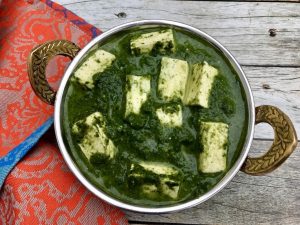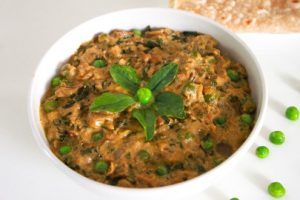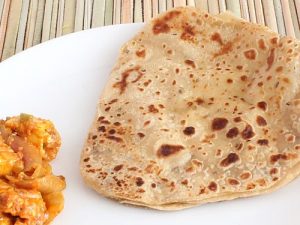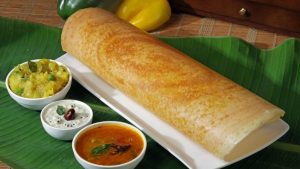Food is an extremely important of my own personal life because it has always represented something more meaningful than the nourishing physical effect that it has on my body. Despite the fact that food is one of the basic necessities that humans need to continue operating their body, there are symbolic and emotional meanings that have slowly developed over the course of my life and have ultimately attached them to the meals that I eat. They ultimately have become a part of who I am as a person, drawing me closer to the people that I call my family and friends, while also contributing to both my cultural background and my personal interpretations of that culture. Choosing to eat the food ultimately impacts my life by first reinforcing the identity that my collective experiences and relationships have defined for myself and second by allowing me to continue a process of growth and development as I gain more of these experiences and relationships.
My life is one that is characterised by a large amount of travel and exposure to new and exciting cultures, all of which possess different types and classes of food. The idea of remaining static in a single location is not one that appeals to me, due to the immeasurable opportunities that remain unexplored. As a result of this, the foods that are important to me closely mirror this dynamic nature, pulling heavily from the various cultural experiences and unique relationships that I have slowly accrued throughout my life. The very foundation of my experience and identity is closely tied to my Indian upbringing, having been born and raised there and having parents that are both from the country. The stereotypical understanding of foods originating from this area is limited to the idea of a spicy curry paired with the most famous of rotis, the naan. However, to simply apply this broad brush to the multitude of gravies and sauces that constitute the food that I ate at home, a significant number of which did not even incorporate the curry leaf ingredient from which curry receives its name, fails to do justice to the food. The rich creaminess of a perfectly cooked palak paneer (homemade farmer cheese stewed in spinach-based gravy) or the interplay between the sweetness, nuttiness, and bitterness of methi malai mutter (fenugreek-flavoured green pea stew) showcase just how complex and intricate the flavours can be, contradicting the diluted cultural representation of Indian food present outside the country. These are supplemented by rotis of every size and shape, ranging from the layered and oily paratha to the oversized crepe-like dosa, all of which put the simple naan to shame. However, despite the special place that these foods hold in my heart, they do not successfully represent the entirety of my identity. One cannot deny the special importance that I place on foods like takeout pizza and burritos, simply because being a college student in the United States is such an important aspect of my current identity and personal culture. Overall, it is the unique combination of foods from cultures all over the world that I have visited and absorbed that represent my friends, family, and personal identity.
Foods that are important to me achieve this status because they hearken back to certain experiences, emotions, friends, or family that are an integral part of who I am as a person. The ability to draw on this unique characteristic associated with the food that I am consuming is the main reason that I choose to eat them. Depending on what sort of experience I am attempting to draw out, I might choose to look for a place that serves a truly authentic palak paneer in the hopes of establishing a connection to my home and family, during the times that I am feeling down or homesick. This reinforcement helps me stay true to the identity that I have developed for myself, maintaining the connections to people and values I care about. However, my decision to eat certain foods also stems from a supplementary impact that the act of consumption can have on my collective identity. The desire to push boundaries and grow is one that can be achieved through a similar process, due to the tight hold that eating food has on how I define myself. This two-fold ability to either reinforce certain aspects of my identity during times of strife by consuming the familiar or to push myself outside my comfort zone to promote growth by exploring different foods and the cultures that are responsible for them is the main significance of these foods for me. Additionally, the constant redefinition of what foods are important to me that comes about as a result is reflective of the constant changes in my life as I face new experiences and build new relationships.
My most recent set of experiences have revolved heavily around the time that I have spent here in Atlanta, which has resulted in an entirely new set of foods that have developed an importance to me and contributed to my identity. The two main sets of ethnic cuisines and communities that have made a significant impact on me whilst in Atlanta are Korean and Ethiopian. Korean food is currently experiencing an explosion in the United States, which in turn has caused the community to spread out throughout the entire nation. The experiences that I have had with these individuals has been extremely eye-opening because of the unique way KBBQ is served and consumed. Furthermore, the times that I have spent at these restaurants, along with the interactions throughout the university with Korean international students, have given me glimpses into their culture that help provide context towards the food that I am eating. The new experiences that I had while eating these foods are examples of times when the food I eat pushes me outside my comfort zone so as to promote development in my identity. An interesting note that I have to make regarding this specific community has to do with the way that the Korean food that has gained popularity in the US, especially the KBBQ restaurants that I visit all the time, does not represent the actual food consumed back in Korea. There is a clear parallel to my own experiences with the Indian curries that individuals outside of India believe constitutes the cuisine. On the other hand, the connection to Ethiopian cuisine and community instead focuses on the long-standing relationship that has always existed between their foods and the foods of my homeland. It is hard to describe the elation that I felt when I realised that I could order injera, a floppy cake barely distinguishable from the dosas I ordered back home, at a corner restaurant. This ethnic community and my experiences with them are examples of a time where foods instead reinforce the identity that I have already established, providing me with support whenever I need it.
Recipes
Palak Paneer

Ingredients
- 1 pound spinach (fresh or frozen), chopped
- 2 cups paneer cubed
- 2 tablespoon ghee
- 1 teaspoon cumin
- 1 onion chopped fine
- 1-2 teaspoons hot green chili minced
- 1 teaspoon garlic minced
- 1 teaspoon Ginger minced
- 15 cashews
- 4 tablespoons milk
- 1 teaspoon garam masala
- salt
Instructions
- Add cashews to milk and blend together to make a smooth paste. Keep aside.
- Add ghee after heating the pot up.
- Add cumin seeds, ginger, garlic and green chili. Saute for 1 minute. Add onions and cook for 2 minutes, stirring a few times.
- Add chopped spinach, salt and 1 cup of water. Close Instant Pot with pressure valve to sealing.
- For frozen spinach – Manual on high pressure for 1 minute, For fresh spinach – Manual on high pressure for 0 minutes
- Quick release the pressure when time is up. Turn Instant Pot to Saute and adjust to “less”, this will stop the spinach puree from splattering all over.
- Add 1/2 cup of water (optional) and blend to make smooth paste using immersion blender.
- Add cashew paste, garam masala and paneer. Gently stir everything together.
- Serve hot with rice or parathas. Enjoy!
Recipe by Archana Mundhe at https://recipes.instantpot.com/recipe/palak-paneer/
Methi Malai Mutter

Ingredients
- 2 cups chopped fenugreek (methi) leaves
- 1 tsp cumin seeds
- 1 chopped onion
- 2 large tomatoes
- 1 cup green peas
- ½ cup cream
- 1 tbsp garam masala
- oil
- salt to taste
- To be ground into a paste
- 4 green chillies
- 2 tbsp cashewnuts (kaju)
- 2 tsp poppy seeds (khus-khus)
- 1 tbsp ginger garlic paste
Instructions
- Make a paste out of green chillies,cashewnuts,poppy seeds and ginger garlic paste by adding some water.
- Wash the methi leaves, chop them and add salt. Keep them aside.
- In a pan heat oil.
- Add cumin seeds and onions. Sauté onions till translucent.
- Make puree of tomatoes and add to the onions. Let it cook for 5 mins.
- Add the poppy seeds & cashewnuts paste.
- Mix well and add garam masala and salt powder.
- Now add fenugreek leaves and green peas.
- Mix everything well.
- Finally add cream and let it cook for 10 mins.
- Serve with hot rotis.
Recipe by Anita Mokashi at http://honestcooking.com/methi-matar-malai-recipe/
Paratha

Ingredients
- 2 1⁄2 cups whole wheat flour (Whole meal flour or Chapati Atta)
- 1 teaspoon salt
- 1⁄2 cup butter
- lukewarm water, to knead the dough
Instructions
- Take a mixing bowl, add flour 2 cups of flour. keep 1/2 cup aside for mixing the dough.
- Put salt and mix it well with flour.
- Knead the dough with lukewarm water. Make a soft dough.
- Let the dough rest for about 30 minutes.
- Take little dough. Make a ball same size as golf ball.
- Take a rolling pin. Make a small dough arounf 2″ diameter.
- Apply butter, fold it, apply butter again and then fold it again to form a triangle shape.
- Roll the dough to make it around 5″ diameter.
- Heat griddle and cook the dough for about a minute.
- Take some oil in spoon and spread on edges of pratha on griddle.
- Flip the paratha and cook other side. Cook for about a minute.
- Flip it again, apply some oil on top. Flip again and cook for about 30 seconds.
- Serve hot yogurt and mango pickle or with any main course dish.
From GeniusKitchen by cook334446 at http://www.geniuskitchen.com/recipe/simple-plain-paratha-369771
Dosa

Ingredients
- 3 cup rice (chawal)
- 1 cup split black gram lentil (urad ki dhuli dal)
- 1 tsp salt (namak)
- 1 tsp fenugreek seeds (dana methi)
- oil as required
Instructions
- Soak rice, dal and dana methi for 6 hours.
- Then grind them to a fine thin batter by adding little water.
- Add salt to it and leave it covered for 12 hours for fermentation.
- Now heat a non-stick tawa (fry pan) and spread 1 tbsp of the batter on the whole of the pan.
- Grease all the corners and then cook it on the other side also.
- Put little water on the tawa and wipe it with a clean cloth before making each dosa.
- Serve them hot with hot sambhar and chutney.
From Indian Food Forever at http://www.indianfoodforever.com/indian-breakfast/plain-dosa.html

This is such a thoughtful post! One suggestion I have is to interweave the descriptions of the dishes with your discussions of the relationship between food and identity.